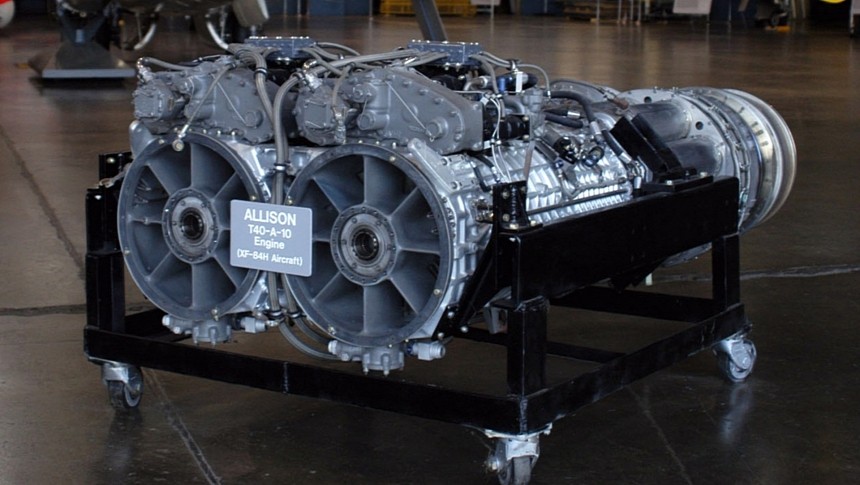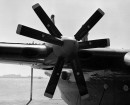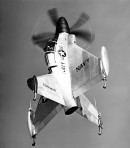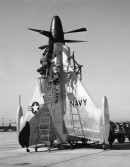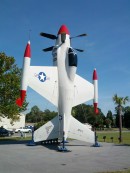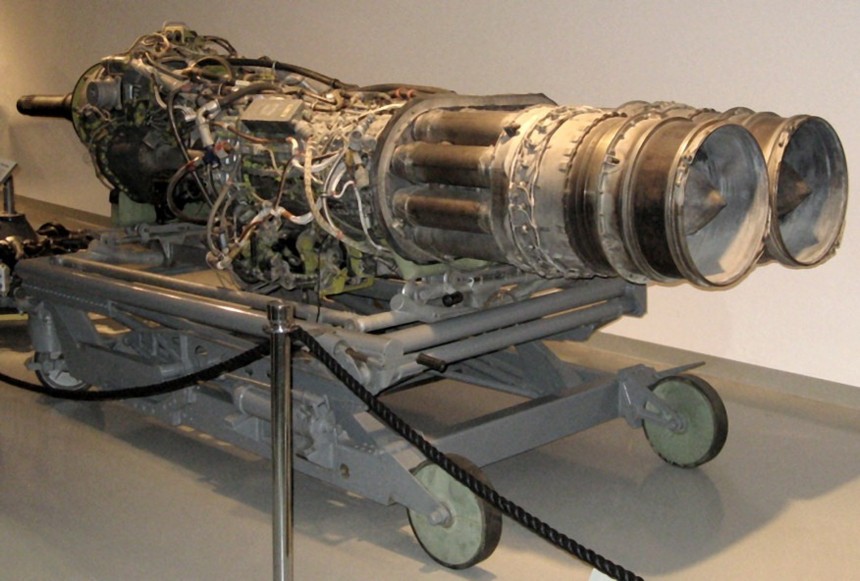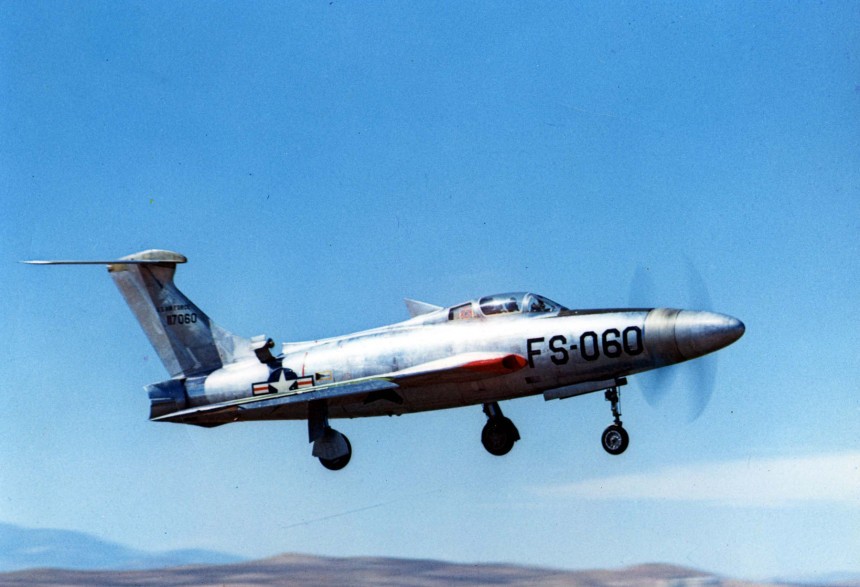Most of the time, an aeronautical engine is only somewhat interesting without the context of the aircraft it's mounted inside. There are a few exceptions, of course. We need not name-drop the Rolls-Royce Merlin or the Pratt & Whitney R-2800 Double Wasp for the umpteenth time. But the common thread between those two engines was, well, they actually worked. That's not something you can say about another famous, or rather infamous aero engine, one that was notorious and memorable for all the wrong reasons.
The story of the American Allison T40 turboprop engine is one of innovation, blood, sweat, several gallons of engineer tears, and ultimately a rage-quit that'd make contemporary Call of Duty players blush. It was just par for the course for an engine that often spent more time disassembling itself than it did a functioning source of propulsion. Like most good early Cold War stories, the T40's tale begins in the dog days of the Second World War. Of course, the common misconception exists that Germans alone had access to novel gas-turbine engine technology during the war.
But, as you'll soon find, this notion is a load of bovine excrement. The Allied nations also maintained a healthy interest in turbine-engine research even well before the end of the war. In fact, the British engineer Frank Whittle beat the German Hans von Ohain to the patent office with his novel design for what became the first British jet engine to fly in the form of the Power Jets W.1. Though the Germans technically beat the British in getting a jet-engine airplane into the air, Sir Whittle had already set the path into the future by sharing his brilliant engine design with the Americans.
Such was the impetus behind the first breeds of American turbine engines like the General Electric J31, and the first American turboshaft engine, the General Electric T31. Though not the first American turboprop, the renowned engine manufacturers at the Allison Engine Company of Indianapolis, Indiana, entered into the fray with the T40's direct predecessor, the T38. Initially rated at 2,250 shaft hp, the T38 was first run in 1947 before being retrofitted in a hilarious fashion to the nose of a B-17 Flying Fortress bomber in 1949. Though undoubtedly wacky-looking slapped on the front fascia of an iconic WWII bomber, the T38 was far from a perfect powerplant.
Problems with thermal management and also the reduction gearbox that paired an aircraft's propeller with the engine became devils that plagued Allison's turboprop engines through the late 1940s and into the early 1950s. As we'll find, this was an omen for what was to come with the T40. To the surprise of absolutely nobody in hindsight, combining the power sections of two Allison T38s together and synchronizing them with a shared reduction transmission took a shaky, unreliable platform and brought out its bad side even further.
Indeed, it was this reduction gear, running at a ratio of 15.75:1, that gave Allison engineers nightmares for years. Clever innovations like a clutch system that could disconnect either of the engine's two contra-rotating propellers in an emergency may have been great on paper. But in practice, the added complexity, plus the frequency of the vibrations inside the tooth-meshes of the transmission, led to some real hijinks for all involved with the project. The nagging issue of the T40's accessory drives being powered by vacuum lines like an old small-block V8 also caused a slew of problems. Extensive redesigns to the internals of the T40 were needed to address these issues. Even then, the extra time spent in redesign only partially solved many of these issues.
On one spectacularly meme-worthy occasion, a mechanical failure inside one of the two power sections of the T40 during a test run resulted in engineers being unable to shut down the remaining operational section. The only way to solve this problem was to unceremoniously toss foreign objects into the engine's air intake, destroying each compressor in the process. But for all the headaches, the T40 engine jetted an eye-watering 5,250 shaft horsepower when it was fitted to its first testbed, the Convair XP5Y flying patrol boat, in 1950. When modified into an anti-submarine role as the R3Y Tradewind, this became the only airframe using a T40 power plant to enter service. Later in life, the T40 would surpass 7,000 shaft hp.
Even so, the unending teething problems with the T40 resulted in the R3Y being grounded by the U.S. Navy not long after its initial deployment. This was expedited even further after one R3Y airframe was nearly lost when it collided with a sea wall upon landing in 1956. Meanwhile, the T40 engine was soon fitted to a modified Douglas AD Skyraider airframe to become the A2D Skyshark attack plane. The Skyshark became notable as the T40's first platform for a fatal accident in 1950 when Navy test pilot Cdr. Hugh Wood experienced a transmission coupling failure during a landing. The result was a high-speed impact directly into the runway, killing Cdr. Wood instantly.
The T40 was also mounted inside the notorious Convair XFY Pogo and Lockheed XFV Salmon VTOL test beds, only to find that having to land backward with the pilot facing away from the landing platform was a silly idea. More to the point, the prospect of conducting such a landing with an impromptu grenade for an engine is a truly sobering one. How no lives weren't claimed behind the stick of the Pogo or the Salmon can only be described as proof of divine intervention at work. Meanwhile, the same nagging problems continued to plague any program the T40 was associated with.
The problems were so bad that when two T40s were mounted inside the Hiller X-18 tilt-wing V/STOL research vehicle, it seldom ever flew without being tethered to a test platform. Lest one of the two engines failed, as it was liable to do, while the prototype was in the air. This would have been a death sentence for anyone on board. As a final ear-shattering crescendo, the T40 was fitted one final time into one last airframe, the Republic XF-84H Thunderscreech.
Many remember the Thunderscreech, a standard F-84F Thunderstreak modified to operate a propeller-driven T40, as being so noisy and so ear-destroying that the plane's Hamilton Standard propellers broke the sound barrier as it taxied to the runway for takeoff. If this sounds like a great way to injure the ears of ground personnel, you're not wrong. The thing even made a few people nauseous with how loud it was. By the middle of the 1950s, the U.S. Air Force and Navy had well and truly had enough. By this stage, all of Allison's research funding began to be diverted to an entirely new design.
What resulted came to be known as the Allison T56, and it was everything the T38/T40 never was. Supremely powerful and dead-on reliable, over 200 million flight hours have been logged in T56-powered airframes like the Grumman C-2 Greyhound, Northrop Grumman E-2 Hawkeye, Lockheed P-3 Orion, and of course, the Lockheed C-130 air-transport juggernaut. This works out to over 18,000 T56 units manufactured since its operational debut in 1954, even surviving Allison's corporate takeover by Rolls-Royce in 1995.
Based upon how god-awfully unreliable the T40 was, you'd be liable to think any improvement whatsoever would be a miracle. If that's the case, the T56 is a miracle that's been recreated nearly 20,000 times. If that doesn't prove divinity, we don't know what will. Today, only a handful of Allison T40 engines remain. With one being prominently on display in the Research & Development Gallery section of the National Museum of the United States Air Force in Dayton, Ohio. Right next to the Republic Thunderscreech jet, which the T40 helped to shatter eardrums across most of Southern California nearly seven decades ago.
Check back soon for more wacky car and aero engine profiles right here on autoevolution.
But, as you'll soon find, this notion is a load of bovine excrement. The Allied nations also maintained a healthy interest in turbine-engine research even well before the end of the war. In fact, the British engineer Frank Whittle beat the German Hans von Ohain to the patent office with his novel design for what became the first British jet engine to fly in the form of the Power Jets W.1. Though the Germans technically beat the British in getting a jet-engine airplane into the air, Sir Whittle had already set the path into the future by sharing his brilliant engine design with the Americans.
Such was the impetus behind the first breeds of American turbine engines like the General Electric J31, and the first American turboshaft engine, the General Electric T31. Though not the first American turboprop, the renowned engine manufacturers at the Allison Engine Company of Indianapolis, Indiana, entered into the fray with the T40's direct predecessor, the T38. Initially rated at 2,250 shaft hp, the T38 was first run in 1947 before being retrofitted in a hilarious fashion to the nose of a B-17 Flying Fortress bomber in 1949. Though undoubtedly wacky-looking slapped on the front fascia of an iconic WWII bomber, the T38 was far from a perfect powerplant.
Problems with thermal management and also the reduction gearbox that paired an aircraft's propeller with the engine became devils that plagued Allison's turboprop engines through the late 1940s and into the early 1950s. As we'll find, this was an omen for what was to come with the T40. To the surprise of absolutely nobody in hindsight, combining the power sections of two Allison T38s together and synchronizing them with a shared reduction transmission took a shaky, unreliable platform and brought out its bad side even further.
On one spectacularly meme-worthy occasion, a mechanical failure inside one of the two power sections of the T40 during a test run resulted in engineers being unable to shut down the remaining operational section. The only way to solve this problem was to unceremoniously toss foreign objects into the engine's air intake, destroying each compressor in the process. But for all the headaches, the T40 engine jetted an eye-watering 5,250 shaft horsepower when it was fitted to its first testbed, the Convair XP5Y flying patrol boat, in 1950. When modified into an anti-submarine role as the R3Y Tradewind, this became the only airframe using a T40 power plant to enter service. Later in life, the T40 would surpass 7,000 shaft hp.
Even so, the unending teething problems with the T40 resulted in the R3Y being grounded by the U.S. Navy not long after its initial deployment. This was expedited even further after one R3Y airframe was nearly lost when it collided with a sea wall upon landing in 1956. Meanwhile, the T40 engine was soon fitted to a modified Douglas AD Skyraider airframe to become the A2D Skyshark attack plane. The Skyshark became notable as the T40's first platform for a fatal accident in 1950 when Navy test pilot Cdr. Hugh Wood experienced a transmission coupling failure during a landing. The result was a high-speed impact directly into the runway, killing Cdr. Wood instantly.
The T40 was also mounted inside the notorious Convair XFY Pogo and Lockheed XFV Salmon VTOL test beds, only to find that having to land backward with the pilot facing away from the landing platform was a silly idea. More to the point, the prospect of conducting such a landing with an impromptu grenade for an engine is a truly sobering one. How no lives weren't claimed behind the stick of the Pogo or the Salmon can only be described as proof of divine intervention at work. Meanwhile, the same nagging problems continued to plague any program the T40 was associated with.
Many remember the Thunderscreech, a standard F-84F Thunderstreak modified to operate a propeller-driven T40, as being so noisy and so ear-destroying that the plane's Hamilton Standard propellers broke the sound barrier as it taxied to the runway for takeoff. If this sounds like a great way to injure the ears of ground personnel, you're not wrong. The thing even made a few people nauseous with how loud it was. By the middle of the 1950s, the U.S. Air Force and Navy had well and truly had enough. By this stage, all of Allison's research funding began to be diverted to an entirely new design.
What resulted came to be known as the Allison T56, and it was everything the T38/T40 never was. Supremely powerful and dead-on reliable, over 200 million flight hours have been logged in T56-powered airframes like the Grumman C-2 Greyhound, Northrop Grumman E-2 Hawkeye, Lockheed P-3 Orion, and of course, the Lockheed C-130 air-transport juggernaut. This works out to over 18,000 T56 units manufactured since its operational debut in 1954, even surviving Allison's corporate takeover by Rolls-Royce in 1995.
Based upon how god-awfully unreliable the T40 was, you'd be liable to think any improvement whatsoever would be a miracle. If that's the case, the T56 is a miracle that's been recreated nearly 20,000 times. If that doesn't prove divinity, we don't know what will. Today, only a handful of Allison T40 engines remain. With one being prominently on display in the Research & Development Gallery section of the National Museum of the United States Air Force in Dayton, Ohio. Right next to the Republic Thunderscreech jet, which the T40 helped to shatter eardrums across most of Southern California nearly seven decades ago.
